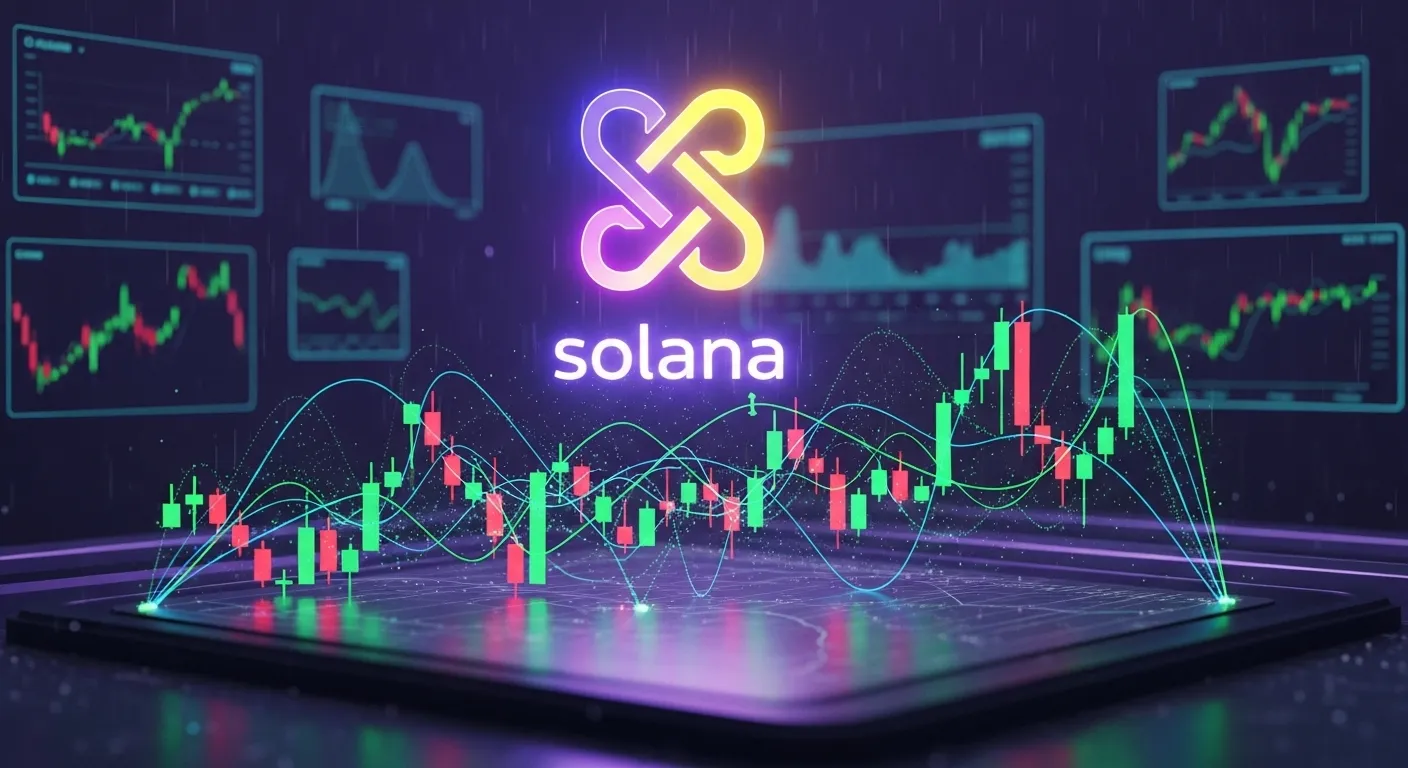The Solana network, with its high-speed architecture and massive throughput, is recognized as a primary rival to Ethereum and a leading platform for Decentralized Finance (DeFi). As of September 18, 2025, the SOL token has reached 239, marking a 1% daily gain and a 7% weekly rise. This impressive upward movement is not merely a reflection of market volatility but a direct result of rumors surrounding Exchange-Traded Funds (ETFs) and fundamental advancements in network infrastructure. This analysis focuses on a deep evaluation of the fundamental and technical factors to determine the sustainability of this rally and SOL's potential to cross the 300 mark.
Macroeconomic Drivers and Institutional Capital Flow
Solana's recent performance has been reinforced by positive macroeconomic signals, particularly the 25-basis-point interest rate cut by the Federal Reserve. This shift in monetary policy has driven capital toward higher-risk assets. However, the most significant catalyst for SOL's acceleration is the imminent influx of institutional liquidity through ETFs.
* ETF Hype: The probability of a Solana ETF approval is estimated to be as high as 95% by year-end. Major financial firms like VanEck and Franklin Templeton have filed for SOL ETFs, with a final decision deadline expected around October 10. Given these factors, prominent analysts, including experts at Bitwise, have suggested SOL has the potential to reach $1,000 in longer-term cycles.
* Institutional Solidification: The $1.65 billion investment by firms like Galaxy Digital and Jump Crypto in Solana-related infrastructure firms (such as Forward Industries) positions Solana as the 'next Bitcoin' for institutional investors. This level of accumulation is also being mirrored by large firms like BlackRock.
* Market Position: SOL's market capitalization stands at approximately $129 billion, holding the sixth global position, which indicates serious market confidence in the network.
Technical Improvement and Network Infrastructure Innovation
Despite a history of technical challenges (such as network outages), Solana is continuously improving its reliability and speed with ongoing upgrades. The 'Alpenglow' upgrade, introducing new mechanisms like Votor and Rotor, has reduced block finality time to 100-150 milliseconds. This unparalleled velocity makes SOL the ideal platform for High-Frequency Trading (HFT) and latency-sensitive applications.
* Leadership in DePIN: Solana has emerged as a leader in the 'Decentralized Physical Infrastructure Network' (DePIN) space. The total value of DePIN projects deployed on Solana has reached $3.24 billion. This utility expands SOL's role from a mere DeFi platform to a critical infrastructure for the Internet of Things (IoT) and physical services.
* Revenue Generation: In April 2025, Solana's Decentralized Applications (dApps) accounted for 57% of the total $207 million in revenue generated across all blockchains. This revenue-generating power is a strong fundamental factor that reinforces the SOL token's value.
* Global Adoption: Projects like Metaplanet utilize SOL for Japanese payments, and stablecoin adoption in Asian markets is also expanding on Solana.
Whale Behavior Analysis and Supply-Demand Dynamics
On-chain data indicates a strategic accumulation and a potential 'supply squeeze' scenario:
* Whale Accumulation: Large wallet holders (Whales) have accumulated over 10 million SOL, and network staking has reached $70 billion. This targeted accumulation suggests a strong belief in SOL's long-term growth potential among major players.
* Staking and Supply: Over 30% of the circulating SOL supply, equivalent to 180 million tokens valued at $43 billion, is locked in staking contracts. This reduces the circulating supply and consistently creates upward pressure on the price. Initiatives like HNT (similar to the Helium project) have simplified staking and increased participation.
* Volume and OBV: Daily trading volume is around $9.4 billion, indicating high liquidity. The On-Balance Volume (OBV) indicator clearly flashed accumulation before the September rally, confirming the validity of the upward move.
Technical Analysis and Price Scenarios
From a technical perspective, the 239 price is at a critical juncture. Key resistances are at 245 and then 250. A decisive and sustained break above 250 activates the psychological target of 300. Key supports are located at 210 and 195. Maintaining the price above 210 is crucial for preserving the bullish structure.
* Momentum Indicators: The Relative Strength Index (RSI) is at 68, suggesting strong upward momentum without entering the overbought zone. The MACD is also decisively in the positive territory, supporting the continuation of the uptrend.
* Short-Term Forecast: CoinCodex analysts have suggested an average price of 240 for September, with the potential to reach 250 by October and $423 by year-end.
Risks and Investment Strategy
Despite the bullish signals, market risks persist. A potential exit of 15 million SOL from the Exit Queue could cause a 4-7% price dip in the short term. Intense competition from Layer-1 networks like BNB Chain and lingering technical challenges (such as the potential for network outages) continue to pose risks.
Conclusion and Strategy: Solana's fundamental status on September 18, 2025, is exceptionally strong, supporting price stability. The ETF wave, technical innovations in DePIN, and increased institutional liquidity have placed SOL on a path of sustainable growth. A successful strategy in this market involves accumulating near key supports and long-term holding to capitalize on its potential as a global, high-speed infrastructure. Solana is not just a token; it is an icon of blockchain infrastructure innovation and has the potential to reach $300 in the short term.
